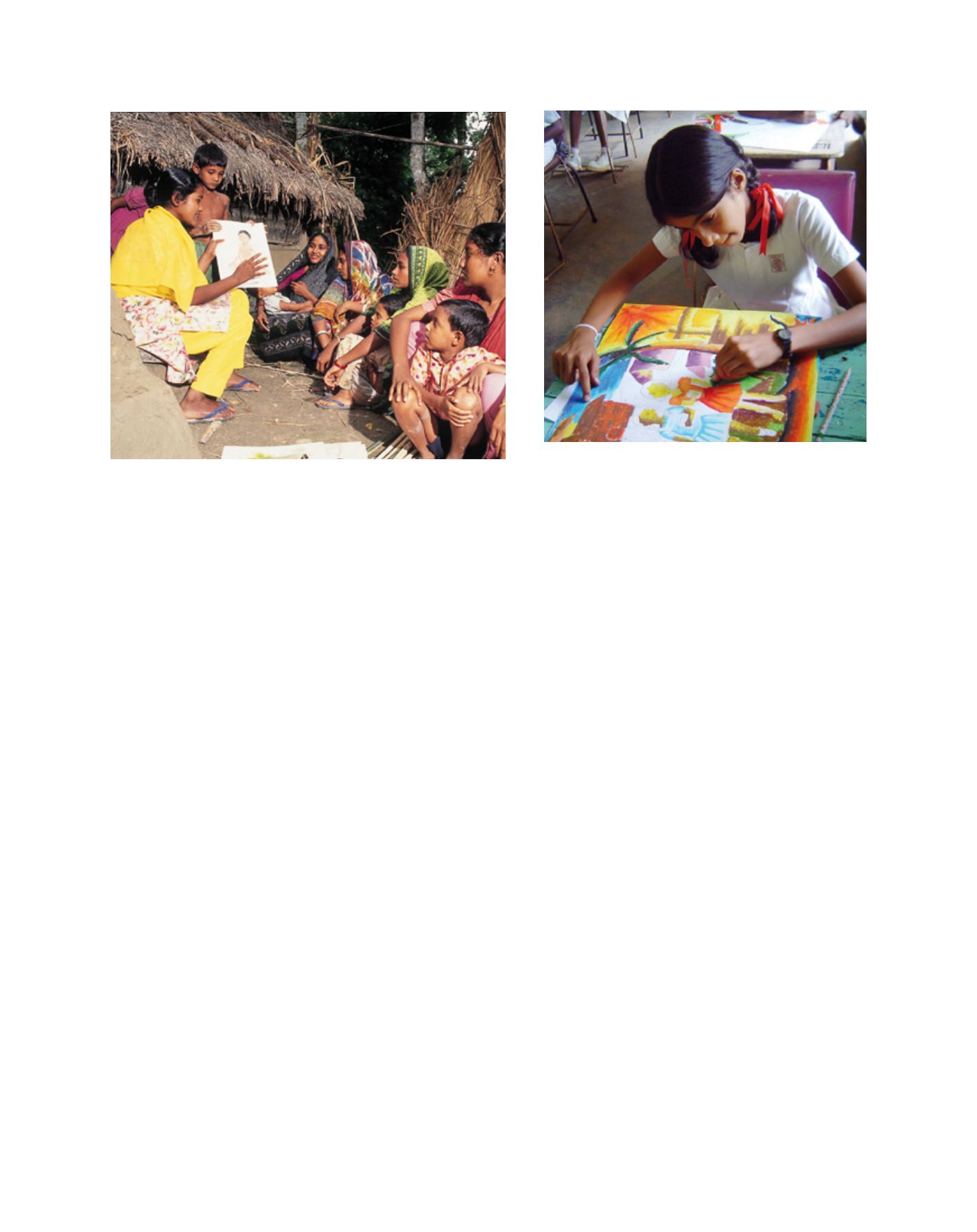

[
] 73
ing large audiences.
10
Launched in 1978, the fisherfolk
radio programme in the Maldives is one of the oldest in
the region. In the early nineties, the BOBP, in association
withWorld Radio for Environment and Natural Resources
(WREN) UK, trained the staff of the Voice of Maldives
(VOM) and the Ministry of Fisheries and Agriculture,
Government of Maldives and fine-tuned the programmes.
In scattered island communities, radio programmes are
immensely useful and also serve as a binding force. The
VOM now produces a variety of radio programmes for the
fisher community, including weather bulletins, technol-
ogy updates, market and tuna fish price reports, music
and religious discourses. The Maldivian experience is an
excellent example of the use of radio in the fisheries sector.
Small-scale Sri Lankan fishers are neither avid readers
nor fans of television. But they listen to the radio,
whether out on the seas, repairing nets on the shore or
relaxing with family at home. In January 1989, the Sri
Lanka Broadcasting Corporation (SLBC) started a radio
programme for fishers – a five-minute programme
every week day (news and features, fish prices, music)
and a 15-minute programme every Sunday (news and
views, discussion, entertainment) in Sinhalese. The
programme was prepared by a Fisherfolk Radio Unit set
up by the Ministry of Fisheries and Aquatic Resources,
with technical and material assistance from the BOBP
and some funding assistance from the Norwegian
Agency for Development Cooperation (NORAD). The
programme has grown over the years and is a valuable
source of information for fishers out at sea.
Similarly, radio is a useful medium of information
for fishers in Bangladesh, where Bangladesh Betar,
the national radio service provider, produces a variety
of programmes for fishers and fish farmers. The
Bangladeshi fishers out at sea stay tuned to their radio
sets for weather bulletins, especially for information on
BOBP and the BOBP-IGO contributed to the development of fisher
communities in the region.
Non-formal education programme for children and adults
A non-formal education project (NFEP) for children of marine fishers
was launched in 1983 in Orissa, India. The BOBP prepared a curricu-
lum and some 120 booklets for children in these communities aged
between six and 14. Around 20 non-formal centres were set up in
four coastal districts of Orissa. The booklets were printed with funds
provided by UNICEF. An important concept underlying their devel-
opment was that they should integrate learning with life. The first
pack of 36 booklets was designed to teach basic letters, words and
numbers. The State Council of Education, Research and Training and
the National Council of Education, Research and Training participated
in the programme. The curriculum’s main features were flexibility
and adaptability to the learning needs of the community and it was
designed to be closely related to local resources and opportunities.
The BOBP’s NFEP for children in fishing communities furthered the
Government of India’s nationwide scheme, Comprehensive Access to
Primary Education, popularly known as CAPE.
From 1982 to 1985, the BOBP organized a first-of-its-kind NFEP
for adult fishers in the state of Tamil Nadu, India. A package of learn-
ing materials, to be used in non-formal adult education (NFAE),
was prepared for this community. The NFAE package included an
animators’ guide, a numeracy primer, a trainers’ manual and supple-
mentary readers. The trainers’ manual and animators’ guide sparked
astonishing demand, not just from all parts of India, but worldwide
– demonstrating the need for these publications. The most heart-
ening index of the project’s success is that it inspired an almost
identical NFAE package for the rural population in general by the
Government of India.
Using the airwaves to reach fishing communities
In poor, isolated communities, radio is often the only link to the
outside world. The BOBP’s work in promoting the use of radio for
fishing communities has proved to be an effective way of reach-
A link worker discusses health issues with fisherwomen in Bangladesh
Sri Lankan school children participate in the BOBP-IGO
painting competition on ‘Life after Tsunami’
Image: E Amalore, BOBP
Image: S Jayaraj, BOBP-IGO
















